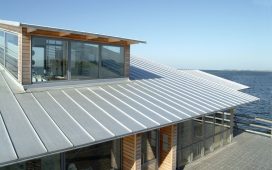Creating living spaces that promote mental health and well-being is an essential aspect of modern architecture and interior design. The environment in which we live can significantly impact our mental state and overall well-being. By incorporating thoughtful design elements, materials, and layouts, homes can become sanctuaries that support mental health and enhance quality of life.
Elements of Home Design for Mental Health
There are several key elements to consider when designing homes to improve mental health and well-being:
- Natural Light: Maximizing natural light in living spaces can boost mood, regulate sleep patterns, and reduce symptoms of depression and anxiety. Large windows, skylights, and open floor plans can help bring in more natural light.
- Biophilic Design: Incorporating elements of nature, such as plants, natural materials, and views of green spaces, can have a calming effect on the mind and reduce stress levels.
- Color Psychology: Choosing soothing colors like blues, greens, and earth tones can create a sense of tranquility and relaxation. Avoiding harsh or overly stimulating colors can help maintain a peaceful atmosphere.
- Organization and Clutter-Free Spaces: Keeping living spaces organized and clutter-free can promote a sense of control and reduce feelings of overwhelm and anxiety. Adequate storage solutions and minimalist design can help maintain a sense of order.
- Comfortable and Functional Furniture: Selecting furniture that is comfortable, ergonomic, and functional can improve overall well-being. Creating cozy nooks for relaxation, workspaces with good lighting, and areas for socializing can enhance the living experience.
The Impact of Home Design on Mental Health
Research has shown that well-designed homes can have a profound impact on mental health and well-being. A supportive and nurturing home environment can help reduce stress, improve mood, and enhance overall quality of life. By paying attention to the design of our living spaces, we can create environments that promote mental wellness and support our emotional needs.
Architects, interior designers, and homeowners alike have a responsibility to prioritize mental health considerations in the design of residential spaces. By integrating principles of mental health design, we can create homes that not only look beautiful but also contribute to our psychological well-being.
In conclusion, designing homes for improved mental health and well-being involves a holistic approach that considers various elements such as natural light, biophilic design, color psychology, organization, and furniture selection. By incorporating these principles into residential design, we can create spaces that nurture our minds, bodies, and spirits, ultimately leading to a happier and healthier lifestyle.
















